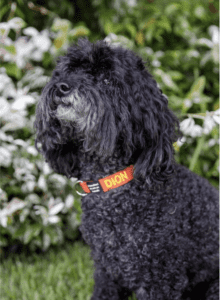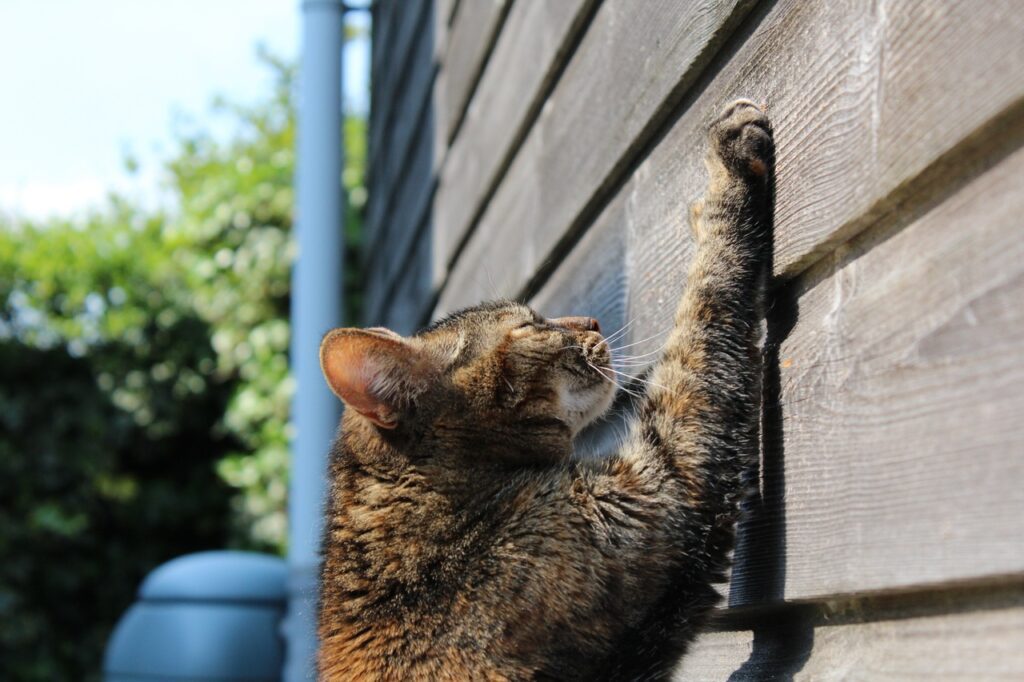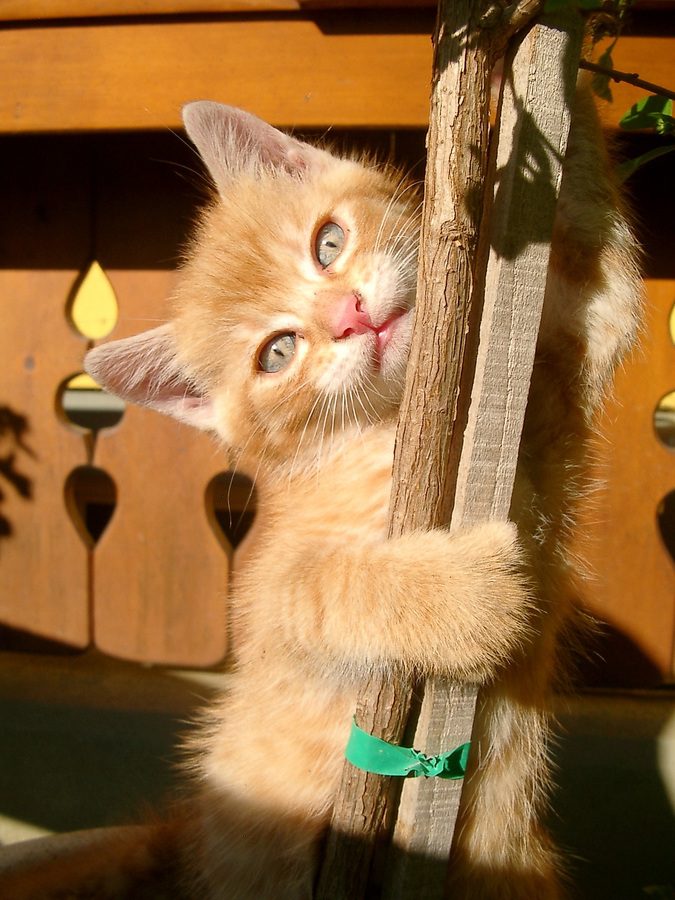Summer holidays are a great time to bring a new pet into your life. It’s often a season when the family is at home and everyone has more time to spend with a pet.
So far, you’ve nailed toilet training and aced puppy school but now other behaviours are setting in and you might be feeling the honeymoon period of pet ownership is starting to wane?
Don’t worry, stick with it and it will be alright. In the meantime, here are some basic cat and dog behaviour concepts to try around the house and some dangers to avoid.
Where to Start
The first place to start is to check if the behaviour that is causing a problem is in fact a behavioural issue or possibly part of a health concern. A check up with The Village Vet at our Pymble or Killara location will confirm this and we will give you professional guidance on how to proceed.
Secondly, engaging a recommended trainer is always a good idea to ensure best practices are used from the outset. Give The Village Vet team a call and we can point you in the right direction for your specific pet and their behavioural needs.
It is important to understand that things don’t change overnight and that most of the behavioural patterns come from repetitive and consistent practices at home by yourselves. Remember, if the pet is young, they will be excitable, easily scared and occasionally anxious when confronted with novel situations. This is perfectly normal and you have an important role as their guide to lead them safely and reassuringly through this time. If it is an older pet that is new to your home then anxiety related to a new environment and change in routine is also likely to be a contributing factor. Give your pet time to adjust to its new surroundings and give them time to get to know and love you.
Start with safety checks and clear away anything that is hazardous to your pet. It is important they are in a safe environment when having fun.
Safety Check Your House and Garden
Planning and preparation of the home and garden will lead to a smoother transition so check these items immediately:
- Give the animal a clean, comfortable and safe area where they can go at any time. This should be a quiet, sheltered area with drinking water and clean toileting provisions at all times.
- String, wires, electrical cords, dental floss, rubber bands, hair bands… are all potential hazards. Tidy them away, tuck them up or remove them from accessible areas.
- Small spaces can be hidey holes for timid animals but they can easily become lost or stuck in these areas. Block up or secure spaces such as behind fridges, fireplaces, doors etc.
- Poisons, insecticides, pesticides, antifreeze, fertilisers and all other chemicals. Keep these away from all animals and children at all times.
- Medications. Keep these away from all animals and children at all times.
- Human Food. Be aware of what foods are toxic to your pets. There are many websites that list these, the most common being chocolate, xylitol (sugar substitute), grapes and nuts.
If you wish our recommended dog trainer, Canine Wise Behaviour & Training can come to your home and assist you with this initial safety check.
Read through our article on Toxic Dangers for Cats and Dogs or for more detailed information on toxic foods, household items and gardening products (including plants and mulches) to avoid go to:
For more information on Household Dangers, you can refer to The Village Vet blog here.
Pet Food and Nutrition
As an animal grows its nutritional requirements will change and you will need to adapt their food, chews and treats accordingly. When in doubt speak to The Village Vet if you need to know what is suitable for their specific stage, age and health status. There is a myriad of product options on the market and they are not all the same.
Water bowls should be filled with clean water once a day. Ensure more than one bowl is left out in case they are knocked over.
Pet food ingredients are notoriously difficult to understand. The Village Vet staff can help direct you in the right direction, all the food we recommend has been assessed for quality, palatability and sustainability. Our article on Pet Food Standards and Regulations will get you started.
Toys and Pet Stimulation
Pets need regular stimulation otherwise they will get bored and find some less “socially acceptable” way to occupy their time.
Choose some toys that you can play with together. Provide plenty of toys that offer a variety of stimulation such as chewing, rolling, cuddling, scratching posts, hard/soft toys etc and rotate them often.
“Kongs” and food puzzles are a great way to stimulate and teach your new pet.
Clearly Identifiable Pet Ownership
Young or new animals will be naturally curious about their surroundings. When this curiosity takes them beyond the gates of your own home it can pose a danger to themselves and others.
Wondering animals can get lost, hit by a car, dehydrated or ill. Ensure they are properly identifiable to ensure a safe and happy return in the unlikely event of this happening.
- Microchip your pet. This is a NSW state requirement and ensures your pet is identifiable and documents that it belongs to you. It will hold your pets name and address, and ownership details. Speak to your vet if your pet is not already microchipped. This is a simple and easy procedure for us to do. Also make sure that when you move house or change phone numbers your pet’s details are updated in the registry. We can help you with this at The Village Vet Pymble or Killara location.
- Clearly readable Collar and Name Tag. These are readily available from any pet store and can include the pet’s name and your contact number at a minimum. If your dog/cat is reactive, make sure this is marked on their collar so the person finding your animal knows to handle with caution. Check out our special offer for Pet Collars with clear markings that will not come off.

- Lead. Get your new animal used to walking around the house or garden using their new lead or harnass. That way they will already be used to one new element before you take them on their first walk.
Common Unacceptable Pet Behaviours
Cat Scratching
Cats start scratching from about 5 weeks. It is a natural behaviour that serves a few different needs in cats:
- Scratching allows the cat to leave a chemical scent and a visual signal for other cats to “read”. Cats have scent glands on their paws.
- Scratching keeps their claws in peak condition – clean, sharp and removes the dead outer layer of the nail so the new nail can grow through.
- Scratching is an easy and natural way of stretching, something cats do frequently throughout the day. Scratching posts assist with this necessary behaviour.

You cannot and should not prohibit your cat from scratching. The best way to handle this behaviour is to:
- Keep the nails trimmed. While this will not stop your cat from scratching, it will minimise the damage while it learns where scratching is best done. The Village Vet provides a Cat Nail Clip Service just for this purpose – we only clip the sharp point off each nail. This is a quick, simple and totally pain free procedure. Book in for an appointment with one of our nurses.
- Provide your cat with scratching options that they like. Cats can be fickle about the shape, size, quality and material of their scratchers so you may need to try a variety before you find ones they really love.
Basically, scratchers should be taller than the cat when on their hind legs. The scratcher should be made from sisal, cardboard, wood, wood composite or soft logs or tree stumps. Some cats however like horizontal scratches as well as vertical ones.
Feliway Diffuser or Spray and Feliscratch: Here at The Village Vet we strongly recommend the use of Feliway diffusers, Feliway spray and Feliscratch!
Feliscratch sends a message to the cat, both visual (blue lines) and invisible (“pheromones”) that encourages the cat to scratch at that location. So the idea is that you put this on the cat scratching post where you want them to scratch.
Feliway spray can be a complementary solution, to be sprayed where the cat should NOT scratch.
Feliway diffuser is a calming and appeasing pheromone that plugs into a powerpoint and diffuses through your home. You will not smell it but it will help reduce anxiety in your cat.
Removing pheromones if your cat has already started scratching in the wrong place: Use an enzyme-based cleaner, as these break down all traces of the scent and pheromones.
Cat Spraying
Cats can continue spraying (urine marking) even after they have been de-sexed. It is usually provoked by stressors such as other cats in the house or environmental issues that are causing your cat to become anxious. Often cats do not display this anxiety obviously to us but instead “act out” in ways like spraying.
If all environmental issues have been addressed, treatment options are available for this. Call The Village Vet if this has become an issue in your house to see how we can help you and your cat.
The Litter Tray
Pets are very particular when it comes to toilet time. The most successful litter tray is a clean, non-fragranced, chemical free and easily accessible one. If you have more than one animal using the litter then you will most likely require more than one tray. Then general rule of thumb in fact is to have one litter tray per cat plus one.
Sources
- Dr Martine Perkins BVSc (Syd Hons) MANZCVS MRCV, Senior Veterinarian and Owner. The Village Vet
- Zoetis Pet Care. https://www.zoetispetcare.com/blog/article/stop-cats-scratching-furniture
- NSW Pet Registry Guidelines. https://www.petregistry.nsw.gov.au/#/


